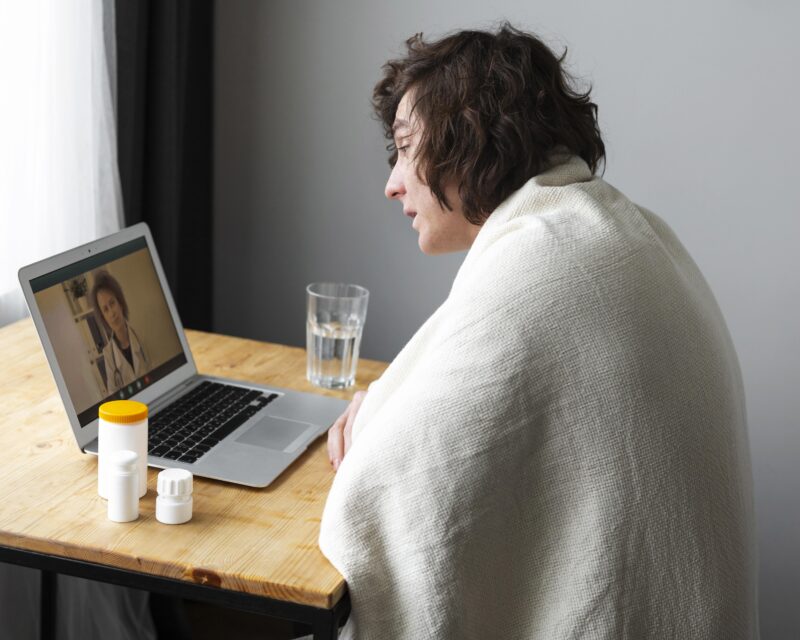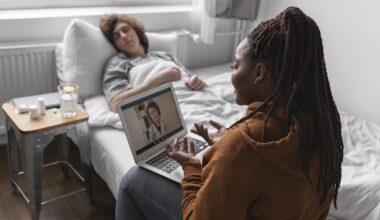Online Therapy for Depression and Anxiety, Best Online Therapy for Depression and Anxiety, Virtual Therapy for Depression and Anxiety, Affordable Online Therapy for Anxiety and Depression
If you’re struggling with the profound emotional impacts of depression and anxiety, online therapy for depression and anxiety can feel like a lifeline, no waiting room, no commute, just the steady presence of a therapist from the comfort of your own home. Picture beginning a session in a quiet corner of your living room and slowly rediscovering hope, skills, and purpose.
In this guide, we’ll explain what online therapy for depression and anxiety looks like in practice, how it helps, the benefits and limitations to expect, and how to choose the right virtual counselling service. Together, we’ll walk through each step so you can make an informed, confident decision about your mental-health care.
What is Online Therapy for Depression & Anxiety?
Online therapy refers to mental health counselling delivered through digital platforms—video calls, voice sessions, messaging, and even apps. Also called teletherapy, e-therapy, or virtual counselling, this format allows licensed therapists to connect with clients from anywhere.
When focused on depression and anxiety, online therapy often uses evidence-based methods such as cognitive behavioural therapy (CBT) or guided self-help programs. One recent systematic review found that virtual CBT (for depression) led to significantly lower severity compared with education-only interventions. (PMC)
For depression and anxiety specifically, digital interventions show meaningful effect sizes—online psychotherapy significantly reduced depression and anxiety in meta-analysis settings. (Frontiers)
Why Online Therapy Is Gaining Traction for Depression & Anxiety
There are many reasons online therapy for depression and anxiety is growing in popularity:
- Accessibility: If you live in a remote region or cannot travel easily, virtual sessions connect you with professionals. One study found therapists viewed online counselling as more accessible during COVID-19. (PMC)
- Convenience: Book sessions around your schedule, skip commute time, and attend from home.
- Effectiveness: Research shows online therapy often performs on par with in-person sessions for depression/anxiety. (Verywell Mind)
- Lower barrier for help-seeking: Some people find it easier to open up online than face-to-face.
- Broader provider pool: You may access specialists outside your local area.
Benefits & Limitations of Online Therapy for Depression & Anxiety
Here’s a clear breakdown of what works—and what to watch out for.
| Benefit | What this means for you | Limitation |
|---|---|---|
| Flexibility & location independence | Attend from anywhere, fit sessions around your life | Requires stable internet & private space |
| Evidence-based outcomes | Virtual CBT shows reductions in depression/anxiety symptoms | Not all platforms use high-quality therapy |
| Lower stigma feel | More people may try therapy when it’s online | Tech issues may interrupt flow of sessions |
| Access to wider range of therapists | More choices for specialist help | Licensing/regulation may vary between regions |
| Often lower cost or bundled pricing | Better value in some cases | Insurance coverage may differ |
Who Should Try Online Therapy for Depression & Anxiety?
Online therapy may be a strong option if you:
- Feel anxious or depressed but are avoiding traditional in-person care
- Live far from a mental-health provider or have mobility/transport issues
- Prefer a more flexible or private way to access support
- Are dealing with mild to moderate depression or anxiety
However, you might want to consider in-person or hybrid therapy if you:
- Are experiencing acute symptoms, suicidality, psychosis, or severe trauma
- Require a highly hands-on therapeutic approach
- Have unstable internet or no private space
- Prefer face-to-face human connection
How to Choose the Right Online Therapy Service
Here’s a practical checklist for selecting an online therapy platform or therapist for depression and anxiety:
- Check credentials: Ensure the therapist is licensed in your region.
- Therapy type & experience: Look for therapists experienced in depression & anxiety, and evidence-based modalities like CBT.
- Delivery format: Video, audio, messaging? Does it fit your comfort and schedule?
- Privacy & security: Confirm that data/platform is encrypted and compliant (HIPAA, GDPR etc.).
- Cost & insurance: Are sessions covered by your insurer or offered at sliding scale?
- Trial or intro session: Many platforms offer a free or discounted first session use it to assess comfort and engagement.
- Emergency plan: What happens if you’re in crisis? Good platforms give clear guidance for urgent care.
What to Expect During Online Therapy Sessions
Here’s a breakdown of what typically happens when you engage in teletherapy for depression and anxiety:
- An intake assessment: you complete forms on symptoms, history, goals.
- First session: you meet with the therapist via video/audio, establish rapport, discuss goals.
- Ongoing sessions: you might meet weekly or biweekly; therapy may include homework, worksheets, tracking mood.
- Mid-course review: your therapist monitors progress, may shift strategies.
- Maintenance or termination: once goals are met you may reduce frequency or shift to check-ins.
To stay on track, you should:
- Set up a private, quiet space for sessions
- Have reliable internet and a backup (like phone audio)
- Be honest and open therapy works best when you engage
- Do homework asked by therapist (mood logs, CBT worksheets)
- Monitor improvements: less anxiety, better mood, increased daily functioning
Online Therapy vs In-Person Therapy: How They Compare
Here’s a comparison of virtual versus face-to-face therapy for depression & anxiety:
| Feature | Online Therapy | In-Person Therapy |
|---|---|---|
| Accessibility | High—remote access | Limited by location/transport |
| Cost & time | Often lower cost & no commute | May involve travel and higher cost |
| Flexibility | More flexible scheduling | Fixed slots, may require travel |
| Non-verbal cues & environment | Some cues lost; home environment | Full cues and dedicated clinical environment |
| Evidence for depression/anxiety | Strong evidence of equivalence or near-equivalence (PMC) | Long-standing track record |
| Ideal for severe crisis | Less ideal unless integrated with in-person support | Better suited for acute cases |
Bottom line: For many people with depression and anxiety, online therapy is an excellent option especially when travel, stigma or time are barriers. For more complex cases, in-person or hybrid care may still be optimal.
Tips to Maximize Your Online Therapy Success
To get the most out of your sessions, follow these practical tips:
- Schedule consistent sessions and treat them like important appointments.
- Create a dedicated space: quiet, private, with minimal distractions.
- Prepare for sessions: write down what you want to discuss, bring notes.
- Follow through with homework your therapist provides—therapy lives outside the hour.
- Track your progress: mood logs, functional improvements, symptom checklists.
- Be open to switching therapists or platforms if you don’t feel heard or safe.
- Use moment-to-moment supports between sessions: breathing exercises, mindfulness, self-care routines.
- Know when you need additional or higher-level care if symptoms increase, reach out to your doctor or crisis line.
The Future of Online Therapy for Depression & Anxiety
The landscape of online therapy for depression and anxiety is evolving quickly:
- More personalised digital therapy options, including guided programs and apps.
- Hybrid models combining online and in-person sessions.
- Improved access globally, especially in underserved regions.
- Research continues to support equivalence or near-equivalence with in-person therapy. (BioMed Central)
- Greater focus on user experience, engagement, accessibility, and clinical oversight.
Conclusion
If you’re grappling with depression or anxiety, online therapy for depression and anxiety can offer a meaningful path forward. It brings professional support directly into your home, removes many logistical barriers, and is backed by growing scientific evidence. However, it’s important to remember that it isn’t a one-size-fits-all solution. Take time to evaluate your needs, research the right options, and engage fully in your healing process.
By choosing a platform with credible professionals, committing to your sessions, and working closely with a therapist or counsellor you trust, you’re taking an empowered step toward long-term emotional well-being. Remember help is real, support is accessible, and with online therapy for depression and anxiety, you can move toward a calmer, healthier mind.
.
Disclaimer: This article is for informational purposes only and does not replace professional medical or psychological advice. If you are experiencing suicidal thoughts or a crisis, contact emergency services or a mental health provider immediately.
Related post: The Healing Power of Online Therapy for Mental Health

